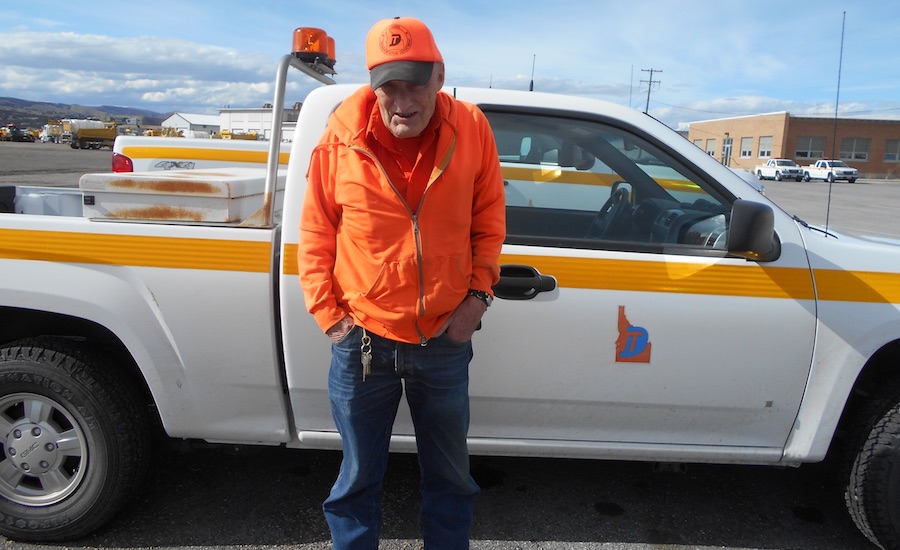When Terry Jacobsen showed up for this first day of work with the Idaho Transportation Dept. in April 1959, he wasn’t thinking about starting a career in the transportation industry. He was barely 20 years old and just needed a job.
Fifty-seven years later, Jacobsen, now 77, and a senior lab technician in charge of performing strength tests on concrete-paving samples for ITD, is officially the longest-serving public employee in the state of Idaho. He will mark his 58th year on the job later this month.
“I don’t know if it [the record] is all that great,” Jacobsen says. “I just come to work every day because I’ve made a habit of it. Working helps keep my mind off whatever other problems I’ve got at the time.”
Still, Jacobsen says he intends to hang on until he reaches the 60-year mark, and maybe more, if his health holds up. He likes being on the front lines of lab work because “I’m not sitting at a desk very often, where I’d probably just get sleepy,” he says.
Although he has done many different jobs for ITD, including working on striping and slope-staking crews in the ‘60s and ‘70s and running load tests on soil, he’s mostly been in the concrete lab since 1984. There he has run at least three different types of test presses on samples taken from the area’s highways, bridges and overpasses. He also conducts soil and gravel tests, but he prefers working with the concrete cylinders.
“It’s good work,” he says. “And I know it’s important work. Our highways go through a lot, considering the weather extremes we have out here.” He works in ITD’s District 5, which covers southeastern Idaho, including Pocatello, not far from where he was born.
Jacobsen says he’s seen some “remarkable” changes in concrete testing over the years, including several testing methods and technologies that are now obsolete, such as soil R-value tests, dial presses and Hveem mix procedures.
He still likes to get out into the field when he can, but says he thinks he’s at his best in the lab.
Jacobsen does yoga every day to stretch his back and spine (his favorite exercises are the shoulder stand and the plow pose), and he keeps his mind sharp by “reading history and doing high-powered math,” like calculus, which he has taught himself at home. “They didn’t have calculus in my high school [in St. Anthony, Idaho] back then,” he says.
Jacobsen did not have the chance to go to college. He says he needed to work. “But I got to where I could do pretty good math in my head,” he adds, “which came in handy on the job in the early years because we didn’t have calculators back then either.”
|
Back to Craft Workers Open Up About Their Careers |




